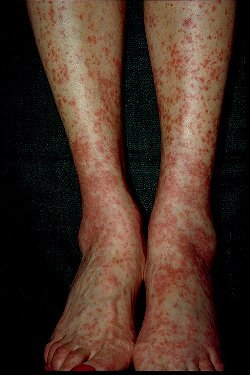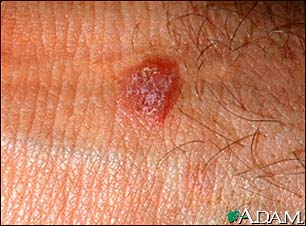Hepatitis C (HCV) is a very common chronic viral infection that I encounter frequently in both my The Woodlands dermatology and Conroe dermatology offices. HCV is a single stranded RNA virus that is usually transmitted through exposure to HCV contaminated blood such as in blood transfusions that have not been properly screened or through IV drug use, unlike Hepatitis B virus which is usually sexually transmitted. Less than 1/3 of patients are symptomatic on initial infection with HCV. Chronic infections occur in up to 80% of patients with HCV, which may present with liver cirrhosis, liver cancer or liver failure 10 to 20 years after the primary infection. Skin findings are very common in HCV. Vasculitis can occur which appears as palpable purpuric (bruises) papules and nodules. Cyroglobulinemia type 2 is due to a circulating cryoglobulin type 2 that can occur in 1% of all HCV patients and results in a leukocytoclastic vascultitis, livedo reticularis, and urticaria as the skin findings. Cryoglobulinemia can also cause inflammation of the joints, kidneys, and peripheral nerves. Porphyria Cutanea Tarda (PCT) is another skin disease due to HCV in which patients present with tense bullae (blisters) on the dorsum of their hands and forearms. Lichen planus is a rash consisting of red itchy papules on the skin and white lacy patches and ulcers in the mouth that can be due to HCV. Necrolytic acral erythema is a skin rash unique to HCV in which patients develop scaly red plaques on their palms and soles. Most of the HCV dermatoses respond to treatment of the HCV infection with Interferon and Ribavirin.







